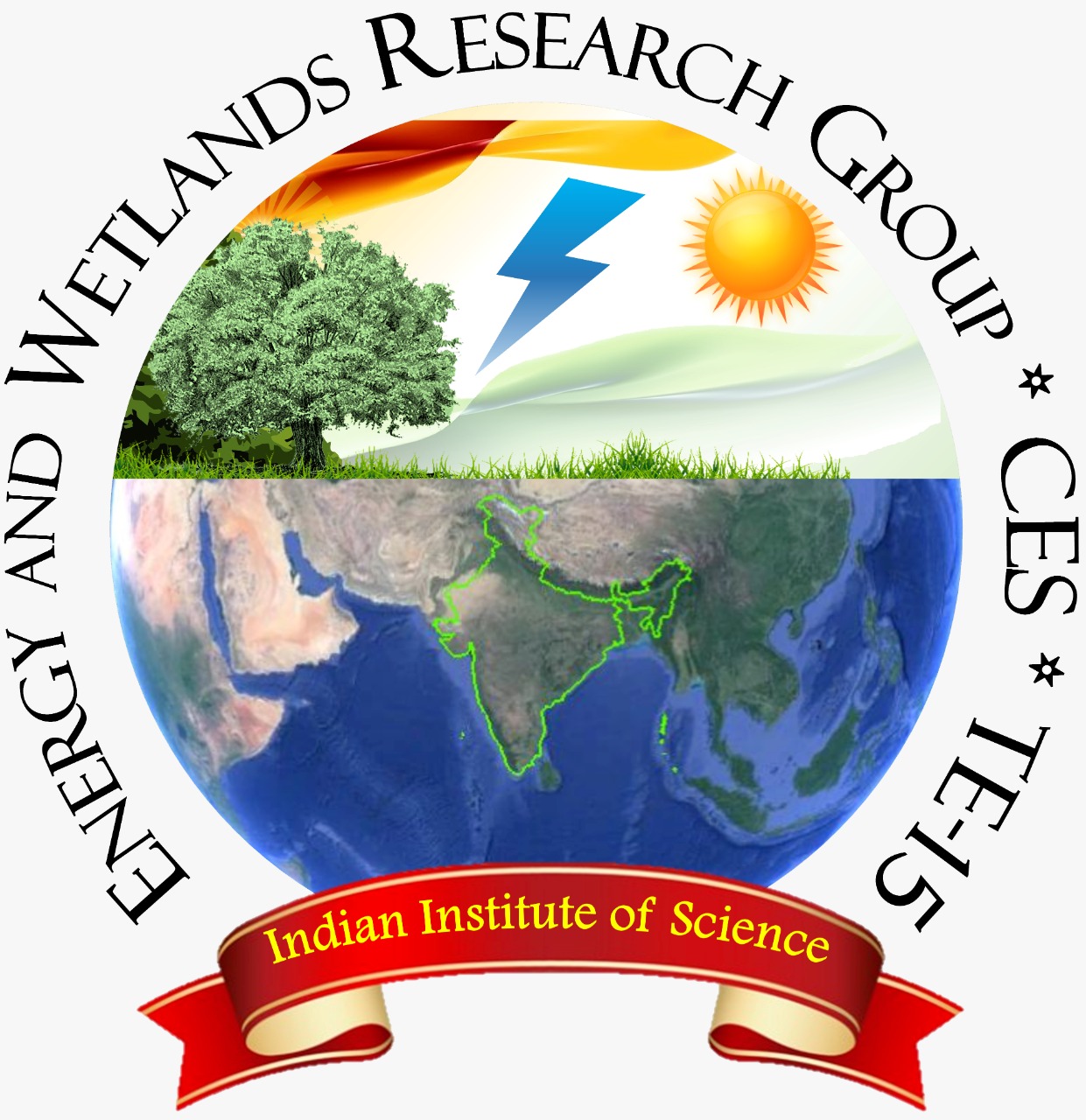|
Introduction
Ecosystems are the distinct biological entities that integrate biotic (living organisms) with the abiotic (nonliving) components (Aronson and Alexander 2013; Fulford et al. 2020) and are characterized by a range of functions: nutrient cycling, biogeochemical cycle, hydrological cycling, etc. They provide a range of essential goods and services for human well-being, health, livelihood, and survival (Wunder 2007; Landers and Nahlik 2013). Ecosystem goods include food, fiber, freshwater, biochemical and genetic resources, etc. Services provided by an ecosystem with the regulation of ecosystem processes are air quality regulation, climate regulation, water purification, disease control, etc., (Costanza et al. 1997; Ramachandra et al. 2017a). The goods and services provided by ecosystems sustain people's livelihood, and the extent of support depends on the conditions or health and spatial extent of the respective ecosystems (DeWitt et al. 2020). Humans have been altering the integrity of the ecosystem, evident from one-third of the earth’s land surface turned into croplands and pastures with the decline of natural areas (Zarandian et al. 2016). This necessitates an understanding of forest dynamics to formulate effective forest management policies to sustain goods and services (Reid et al., 2000; Ramachandra and Bharath 2018). The landscape is considered a distinct spatial unit of forests and other ecological systems, varying across the climatic zones (Brunckhorst 2011; Fischer 2018) portraying non-linearity, hierarchies, heterogeneous conditions, and changes in response to external conditions (Filotas et al. 2014; Nocentini et al. 2017). Landscape structure (size, shape, and configuration) decides its functional aspects, which include biogeochemical cycling and hydrological regimes (Rudnick et al., 2012; Merenlender and Matella, 2013). Alteration in a landscape structure, either due to natural or anthropogenic activities, affects processes such as hydrologic regime, ecology, biodiversity, etc. (Vinay et al. 2017; Ramachandra et al. 2020b). Land use and land cover (LULC) information are vital for understanding the ecosystem and interactions of human activities. LU changes caused by anthropogenic activities lead to alteration in landscape dynamics, causing various changes in biogeochemical cycles. Thus, it plays an important role in global climate change (Ramachandra et al. 2018b). LC relates to the type of physical features (vegetation, non-vegetation) present on the earth's surface. LU relates to the human activity or economic function associated with a specific piece of land, for example – agriculture, horticulture, forest, etc., (Lillesand et al. 2014). Anthropogenic activities leading to large-scale alterations in LULC have been affecting the environment on a global scale. Escalated deforestation to cater to the growing demands with industrialization and globalization has contributed to changes in the global climate with the alteration of biogeochemical cycles (Mukherjee et al. 2009; Jeganathan et al. 2010; Deka et al. 2014). During the last three decades, there has been a substantial reduction in the spatial extent of forests with globalization and the subsequent opening of Indian markets (Bharath et al. 2017; Ramachandra et al. 2020a). Forests constitute vital ecosystems covering about 30% of the Earth's surface. Forest cover changes, especially due to unplanned anthropogenic activities (Huang et al. 2008), have widespread effects on the provision of ecosystem services towards human welfare (Lawrence and Vandecar 2015). As pressure on forest cover increases due to human interventions, there has been a growing concern to mitigate deforestation through monitoring at global and regional scales (Kuemmerle et al. 2009). Vegetation in the forest ecosystem plays a significant role in mitigating carbon in the atmosphere through sequestration during photosynthesis (Hansen et al. 2010; Ramachandra and Bharath 2019a). Forests provide ecological, economic, and social services to human society, including the provision of food, refuges for biodiversity, regulation of the hydrologic cycle, medicinal and forest products, recreational uses, protection of soil resources, and spiritual needs. Forests play a decisive role in the hydrologic cycle through evapotranspiration which cools climate through feedbacks from clouds and precipitation. The ratio of evapotranspiration to available energy is relatively lower in regions with native forests compared to croplands or monoculture plantations (Bonan 2008). Vegetation cover in forests is due to the long-term interaction of geomorphological features, hydrological conditions, soil type, climate change, and anthropogenic activities (Zhu et al. 2012). It helps in modulating the ecosystem through water retention, atmospheric circulation, and terrestrial soil stability and maintains the balance of an ecosystem (Liu et al. 2009; Leilei et al. 2014). Therefore, quantification of spatial extent and conditions of a forest ecosystem provides insights into changes that will aid natural resources management (Hansen et al. 2000). Forest landscape transitions involving the degradation of forests have increased land surface temperature (LST), which is the radiative skin temperature of the earth’s surface. It is one of the key elements representing the integrated features of land-atmosphere physical and dynamic processes (Shwetha and Kumar 2016). LST and emissivity aid in understanding energy budget estimation (Chakraborty et al. 2015; Mohamed et al. 2017; Liang et al. 2019). Emissivity is the ratio of energy radiated from a material's surface to that radiated from a blackbody (a perfect emitter) at the same temperature and wavelength at the same viewing conditions. The emissivity of a surface depends not only on the material but also on the nature of the surface. Estimating LST using emissivity as a parameter provides accurate information with appropriate calibration of LULC changes (Bharath et al. 2013). Conventionally, LST is measured from the direct ground measurement. LST is estimated using the data of thermal infrared bands with the advancement in satellite remote sensing, by either split-window algorithms or mono window algorithms or radiative transfer equation (Le-Xiang et al. 2006; Jackson and Baker 2010; Asgarian et al. 2015; Kayet et al. 2016; Estoque et al. 2017; Kumari et al. 2018; Mujabar and Rao 2018; Ramachandra et al. 2018b; Danodia et al. 2019). Urbanization is a dominant demographic trend, marked by the process of change in land use, causing the transition from a rural to a more urban society. As an increment in urban land use, it reflects the loss of vegetation, agricultural land, open space, etc. This has prompted investigation of the causes and consequences of LULC by mapping and modeling landscape patterns and dynamics (Ramachandra and Kumar 2010; Ramachandra and Bharath 2019c). Hence, forest transition analysis has become a prerequisite for managing and monitoring ecosystem and environmental changes. Humans depend either directly or indirectly on forests to the extent of 80% in the developing world. Altering the ecological integrity would impact the ecological goods and services, affecting the livelihood of the dependent population (Ramachandra et al. 2017a). The conservation and sustainable management of ecosystems are vital components in pursuing ecologically sound, economically viable, and socially acceptable development goals (Xianhong 2015; Ramachandra et al. 2018a, 2021). This entails identifying regions of conservation importance. Regions of conservation importance refer to ecologically sensitive regons (ESR) or ecologically fragile areas for their ecological, biological, cultural, economic and historical values and are conserved by government regulations (Gadgil et al. 2011). Conservation importance regions (CIR) or ESR refers to the zones of permanent and irreparable loss of extant life forms or significant damage to the natural processes of evolution and speciation with the alterations in the ecological integrity of a region. CIR demarcation reflects the scope for different environmental regulations, management issues, and social realities. It acts as a decision-making framework to understand the region’s biodiversity, stakeholders, and strategies necessitate for protection, which aids in solving livelihood issues (Ramachandra et al. 2017b). The increased exploitation of natural resources and large-scale landscape transformations have led to the degradation of the ecosystem. The decision-making process should mandatorily include the conservation of intact ecosystems to ensure the sustenance of natural resources to meet the present and future needs (Ramachandra et al. 2016). The main objective of the current study is to prioritize CIRs in Udupi district (central Western Ghats), Karnataka State, India, and understand the linkages of LST with LU and CIR.
|

